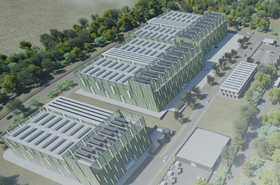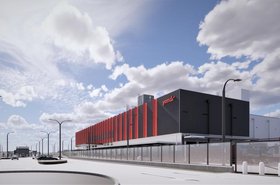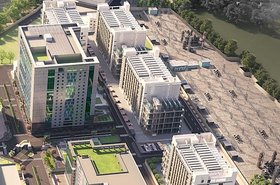The presence of data centers is becoming more evident as escalating demand for digital services and strong locational attributes drive development beyond industrial estates towards urban residential or even semi-rural locations. In some cases, these developments are generating local dismay, community opposition, or politically motivated objection, and the sector languishes under a general sense of opprobrium.
From a pragmatic perspective, a data center development should surely be seen as more benign in terms of local impacts than alternatives like warehousing or logistics, which are associated with very high levels of HGV movements. Also, data centers underpin our modern economy and the digital services that we depend on as well as all those apps we love to use.
Why then, do we see opposition almost by default? And why is a lot of national media coverage so relentlessly negative about data centers? More importantly, is this negativity a fair reflection of public opinion?
Scope for optimism, no room for complacency
We wanted to find out for ourselves, so in May 2024, CyrusOne conducted a major research project seeking views from over 13,000 members of the general public from the seven European countries in which we operate. The intention was to have access to statistically robust data that had been professionally sourced, collated, and analyzed so that we could use the findings to inform our community engagement strategy.
The results give scope for optimism but not complacency. We discovered that people are considerably more positive about data centers than sensationalist media would have us believe: 93 percent of people across Europe were either positive or neutral, with only 7 percent viewing data centers negatively.
Surprisingly perhaps, people who live near data centers tended to be more positive, and more likely to associate them with community benefits like support for local projects, regenerating brownfield land, growth, and jobs. On the other hand, these individuals were also more likely than the general public to identify negative impacts, which included high energy use, unappealing visual aesthetics, and e-waste.
Around two-thirds of people (66 percent) were willing to have a data center in their community and would be even more willing if developers generated local economic benefits in terms of jobs, growth, and training. Again, this figure is very encouraging and suggests that the views of the silent majority are not always fully reflected by a vocal minority.
The study also revealed skepticism among some respondents that benefits promised during planning would never be delivered. This tells us that we must honor our commitments and ensure that these are carefully ringfenced during the planning process so that the local municipality cannot reassign them to another location.
The wide variation in responses to many of the questions reminds us that our approach needs to be bespoke; while there were common trends, no two communities are alike and we need to reflect this in our engagement strategies.
Public understanding of data centers
The most troubling results from the survey relate to public understanding of data centers. Only about half (52 percent on average across Europe) picked the correct definition of a data center from a list of five options. At an individual country level, the UK was bottom, down at 38 percent, which is surprising given the size of the London data center market and the success of our digital services industry.
Even fewer people (45 percent on average across Europe) connected the digital services they use every day with data centers; again, the UK was bottom of the table. Most concerning perhaps, the 16-24 age demographic was least likely to make the connection, at 35 percent on average across Europe. For young people, who have never struggled with dial-up, perhaps the Internet is taken for granted, as an always-on utility, rather than a critical function that is underpinned by industrial-scale infrastructure.
What now?
So we have work to do. Clearly, we can’t expect people to support data center development if they have no idea of the critical role that these facilities play in their lives. We must improve public awareness and understanding, which will be challenging for an industry that is secretive by nature and is business-to-business rather than consumer-facing. Our corporate brands are generally unknown outside the industry and we struggle with outreach.
In truth though, this is old news – we are perfectly well aware that we need to communicate better with the outside world; we are exhorted to this effect at every industry event, but these exhortations tend to happen within our own echo chamber. For an inward-facing sector, looking outward seems hard, but it is not rocket science: we need to ask people what they think, we need to listen to their answers and then we need to act on them.
It is also clear that we need to integrate our data centers into host communities in terms of design aesthetics and both economic and social activity. Three-story grey boxes are all very well on industrial estates, but we need to be more imaginative in terms of architecture and more sensitive to locally built landscapes. In terms of employment, we often struggle with the mismatch between the local skills available and the specific requirements of data center operation, but if we take a long-term approach and support familiarisation and training initiatives, we can start to bridge this. This is a long haul, but we must begin somewhere.
However, integration is more than this: community dividend in terms of local economic growth is part of the social contract that needs to exist between data centers and host communities, but it isn’t just transactional. Integration is not about handing out grants but being part of the local community, visible and active within it for the long term. It is about working together towards common goals. To paraphrase Henry Ford: “Coming together is a beginning, staying together is progress, working together is success.”
We now know what to do, we just need to do it. We have made the research findings available because public perception is something that we need to work on collectively.
Read the orginal article: https://www.datacenterdynamics.com/en/opinions/and-now-for-the-truth-what-people-really-think-about-data-centers/





